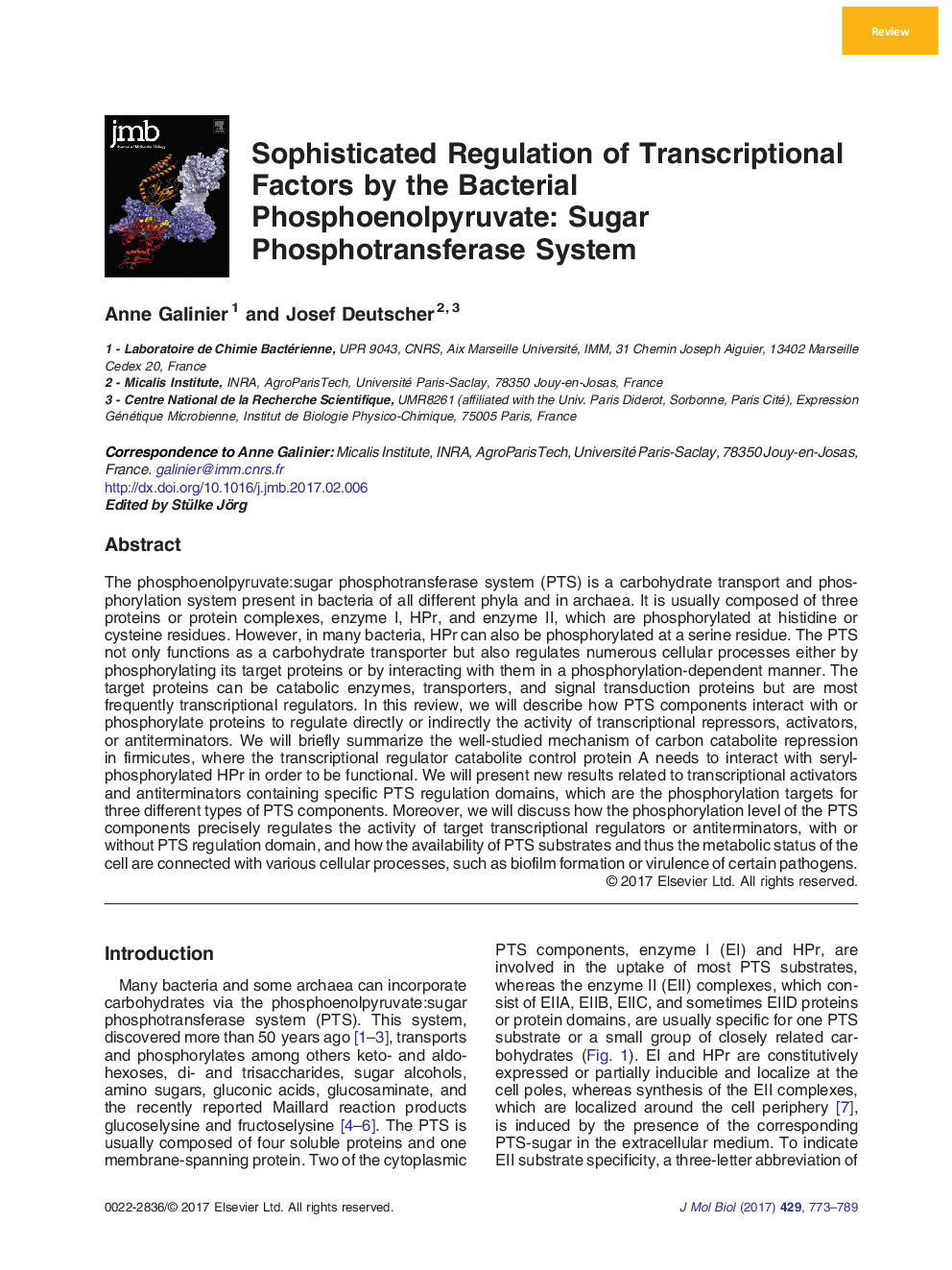| کد مقاله | کد نشریه | سال انتشار | مقاله انگلیسی | نسخه تمام متن |
|---|---|---|---|---|
| 5533169 | 1402105 | 2017 | 17 صفحه PDF | دانلود رایگان |
- The PTS is present in archaea and in all bacterial phyla.
- It is a sugar transport system that also regulates key cellular processes.
- The availability of carbohydrates thus affects bacterial physiology.
- These PTS-mediated regulations involve protein phosphorylation events.
- Transcriptional factors are the main targets of PTS components.
The phosphoenolpyruvate:sugar phosphotransferase system (PTS) is a carbohydrate transport and phosphorylation system present in bacteria of all different phyla and in archaea. It is usually composed of three proteins or protein complexes, enzyme I, HPr, and enzyme II, which are phosphorylated at histidine or cysteine residues. However, in many bacteria, HPr can also be phosphorylated at a serine residue. The PTS not only functions as a carbohydrate transporter but also regulates numerous cellular processes either by phosphorylating its target proteins or by interacting with them in a phosphorylation-dependent manner. The target proteins can be catabolic enzymes, transporters, and signal transduction proteins but are most frequently transcriptional regulators. In this review, we will describe how PTS components interact with or phosphorylate proteins to regulate directly or indirectly the activity of transcriptional repressors, activators, or antiterminators. We will briefly summarize the well-studied mechanism of carbon catabolite repression in firmicutes, where the transcriptional regulator catabolite control protein A needs to interact with seryl-phosphorylated HPr in order to be functional. We will present new results related to transcriptional activators and antiterminators containing specific PTS regulation domains, which are the phosphorylation targets for three different types of PTS components. Moreover, we will discuss how the phosphorylation level of the PTS components precisely regulates the activity of target transcriptional regulators or antiterminators, with or without PTS regulation domain, and how the availability of PTS substrates and thus the metabolic status of the cell are connected with various cellular processes, such as biofilm formation or virulence of certain pathogens.
Graphical Abstract169
Journal: Journal of Molecular Biology - Volume 429, Issue 6, 24 March 2017, Pages 773-789
